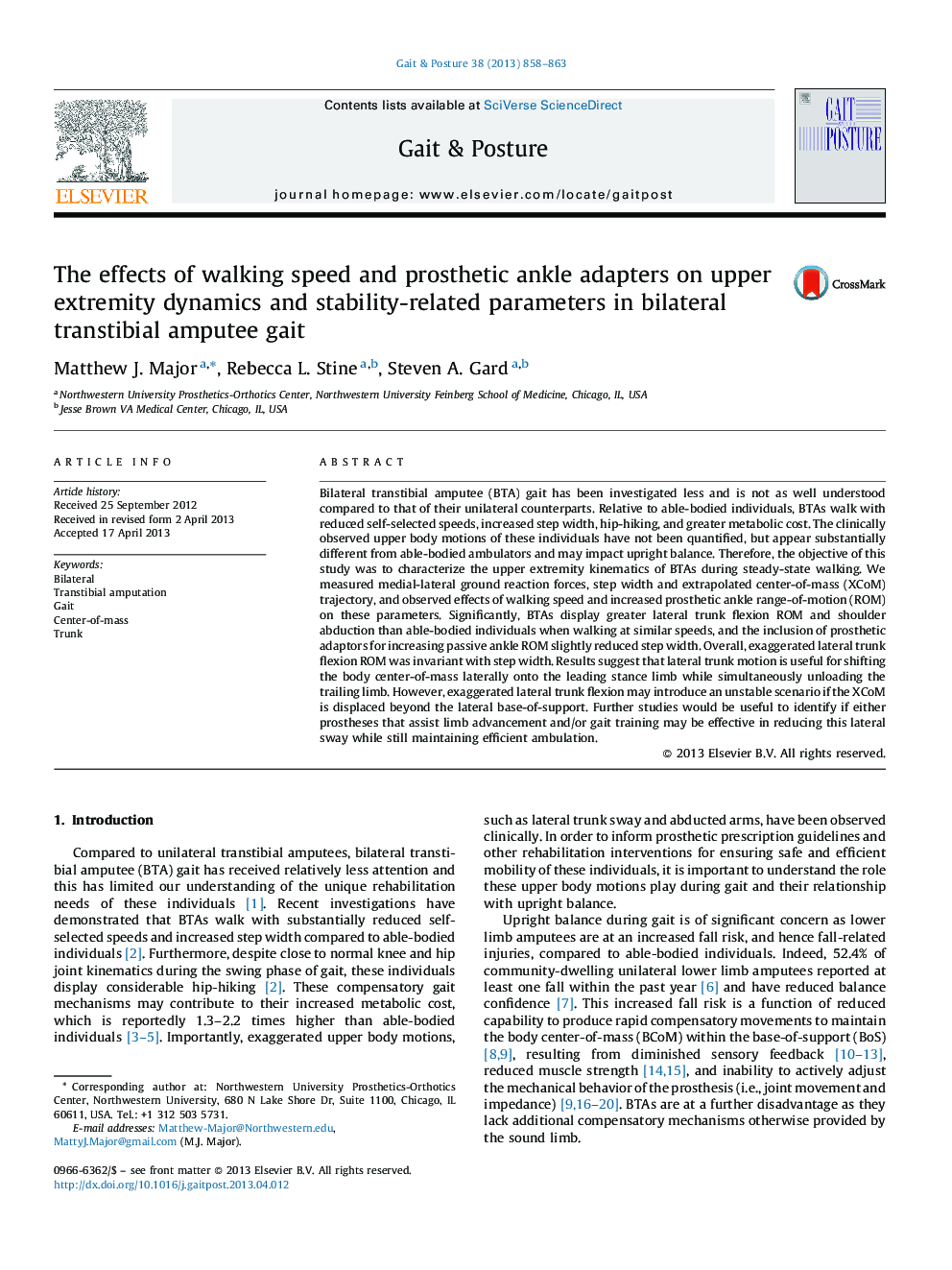| کد مقاله | کد نشریه | سال انتشار | مقاله انگلیسی | نسخه تمام متن |
|---|---|---|---|---|
| 6206776 | 1265652 | 2013 | 6 صفحه PDF | دانلود رایگان |
- We observed upper body kinematics of bilateral transtibial amputee gait.
- Subjects walked with 3 speeds and 2 prostheses of varying range-of-motion.
- Amputees walk with greater lateral trunk flexion range-of-motion than controls.
- Exaggerated lateral trunk sway may expose amputees to reduced walking stability.
Bilateral transtibial amputee (BTA) gait has been investigated less and is not as well understood compared to that of their unilateral counterparts. Relative to able-bodied individuals, BTAs walk with reduced self-selected speeds, increased step width, hip-hiking, and greater metabolic cost. The clinically observed upper body motions of these individuals have not been quantified, but appear substantially different from able-bodied ambulators and may impact upright balance. Therefore, the objective of this study was to characterize the upper extremity kinematics of BTAs during steady-state walking. We measured medial-lateral ground reaction forces, step width and extrapolated center-of-mass (XCoM) trajectory, and observed effects of walking speed and increased prosthetic ankle range-of-motion (ROM) on these parameters. Significantly, BTAs display greater lateral trunk flexion ROM and shoulder abduction than able-bodied individuals when walking at similar speeds, and the inclusion of prosthetic adaptors for increasing passive ankle ROM slightly reduced step width. Overall, exaggerated lateral trunk flexion ROM was invariant with step width. Results suggest that lateral trunk motion is useful for shifting the body center-of-mass laterally onto the leading stance limb while simultaneously unloading the trailing limb. However, exaggerated lateral trunk flexion may introduce an unstable scenario if the XCoM is displaced beyond the lateral base-of-support. Further studies would be useful to identify if either prostheses that assist limb advancement and/or gait training may be effective in reducing this lateral sway while still maintaining efficient ambulation.
Journal: Gait & Posture - Volume 38, Issue 4, September 2013, Pages 858-863
